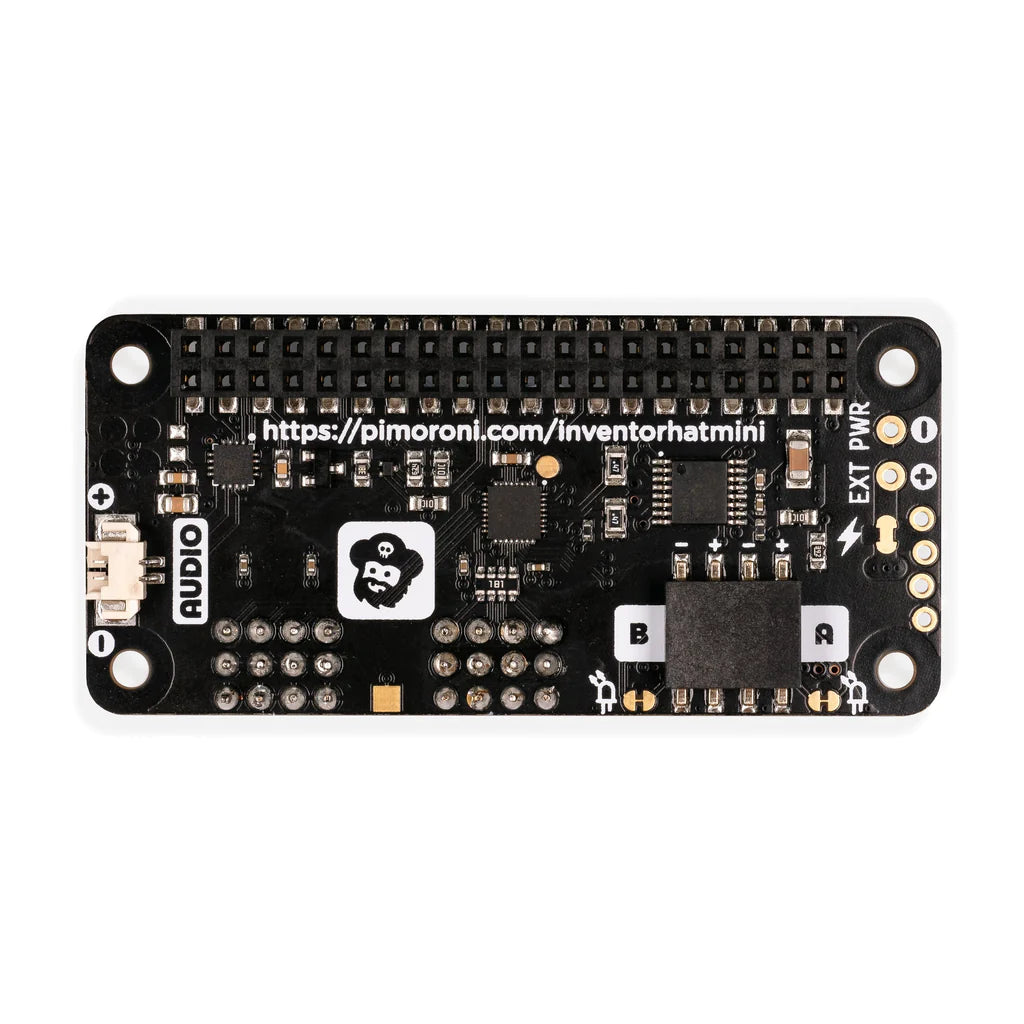Discover the Mini Inventor HAT, an amazing add - on board for Raspberry Pi lovers. This compact HAT lets you turn your mechanical ideas into reality! You can transform your Raspberry Pi into a robot, a prop, or any cool moving creation. It easily drives motors with encoders, connects up to four servos, and adds a speaker for great sound effects. Expandability is a big plus. It has a pass - through header for stacking with other boards and four extra ADC - capable GPIO pins. You can attach sensors, buttons, LEDs, or other accessories. It also comes with 8 addressable RGB LEDs for visual cues. To get you started quickly, it has pre - soldered pin headers, a Qw/ST connector, and a Python library with useful examples. Power users can use the unpopulated external power input for higher voltage motors and servos (up to 10V). Key features include a Nuvoton microcontroller, header pins for servos and GPIO, a dual H - Bridge motor driver, a 3.2W I2S mono amplifier, 8 RGB LEDs, a user button, a Qw/ST connector, a pass - through header, full assembly, and a Python library for easy programming. It's compatible with all 40 - pin header Raspberry Pi computers and fits nicely on Raspberry Pi Zero boards. It measures about 65mm x 30.5mm x 15.5mm. Advanced users can use the unpopulated broken - out headers (soldering required). It offers multiple power options and you can customize direction indicators and motor features.


Using the Mini Inventor HAT is easy. First, connect it to your Raspberry Pi. The pre - soldered pin headers make this a breeze. Then, if you want to add movement, connect motors with encoders using the dual H - Bridge motor driver or up to four servos through the header pins. You can also attach a speaker for sound effects. For extra functionality, use the four ADC - capable GPIO pins to connect sensors, buttons, or LEDs. The 8 addressable RGB LEDs can be used as visual indicators. When it comes to programming, the included Python library with examples will help you get started quickly. If you're a power user, you can use the unpopulated external power input for higher voltage motors and servos, but make sure to stay within the 10V limit. For measurements, it's about 65mm x 30.5mm x 15.5mm. Advanced users who want to use the extra broken - out headers will need to do some soldering. Keep in mind that you can customize the direction indicators and motor features by cutting the back trace. As for maintenance, keep it in a clean and dry place. If you notice any loose connections, check the pin headers. And always make sure to follow the safety guidelines when using external power.







